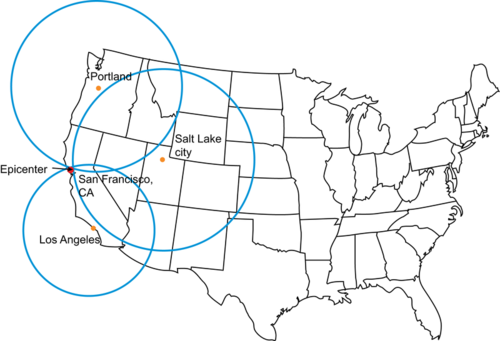
Can you find an earthquake epicenter?
The epicenter of the 2011 Japan earthquake was just offshore of Sendai. This is where the Pacific Plate plunges into a subduction zone. The earthquake had a relatively shallow depth of 20 miles (32 km). Remember that shallow quakes typically cause the most damage. How do scientists find an earthquake epicenter?
Finding the Epicenter
One seismogram indicates the distanceto the epicenter. This is determined by the P-and S-wave arrival times. If a quake is near the seismograph, the S-waves arrive shortly after the P-waves. If a quake is far from the seismograph, the P-waves arrive long before the S-waves. The longer the time is between the P-and S-wave arrivals, the further away the earthquake was from the seismograph. First, seismologists calculate the arrival time difference. Then they know the distance to the epicenter from that seismograph. They can connect all the points that are that distance from the seismic station. This makes a circle around the station!
Next, the seismologists try to determine the location of the earthquake epicenter. To do this they need the distances to the epicenter from at least three seismographs. Let’s say that they know that an earthquake’s epicenter is 50 kilometers from Kansas City. They draw a circle with a 50 km radius around that seismic station. They do this twice more around two different seismic stations. The three circles intersect at a single point. This is the earthquake’s epicenter (Figure below).

[Figure 1]
Seismographs in Portland, San Francisco, and Salt Lake City are used to find an earthquake epicenter.
Summary
To find an earthquake epicenter you need at least three seismographs.
Find the distance from each seismograph to the earthquake epicenter.
The interception of the three circles is the epicenter.


No comments:
Post a Comment